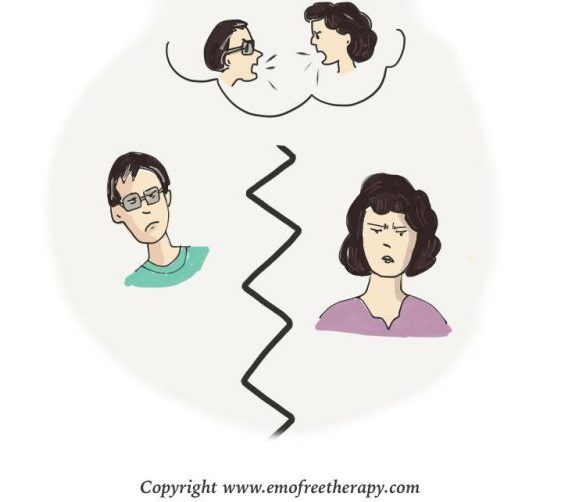
Imago Match
According to Harville Hendrix, Imago is a “composite picture of the people who influenced you most strongly at an early age.” It could be your parents, siblings, nanny – anyone who influenced you at that age. Everything about these people is recorded in your brain and this data is not processed or interpreted – it is simply there; and this influences your choice of your potential partner. In fact, the most vivid impressions of the caretakers – what you remember most about your interactions with them – are the ones that were most hurting and wounding. Those negative experiences are deeply etched in your brain because they were a threat to your survival. Over time, ” these ..bits of information about our caretakers merged together to form a single image.” (Hendrix, 2008)
The truth about Attraction
- Whether you are attracted to a person or not to a good extent depends on how closely they matched your imago, especially the negative and positive traits of your caregivers.
- You are also attracted to someone who makes up for your ‘lost self‘ – the parts of yourself that you repressed. For example, if someone repeatedly told you that boys don’t cry and reprimanded you when cried, you repressed that part of yourself and instead resurrected a ‘false self’, an image of a ‘tough guy’ to the world. Lost self is “those parts of your being that you had to repress because of the demands of the society”
- Growing up your false self protected you from further hurts and wounding, and you carried this image of being a ‘tough guy’ into your adulthood. However, your tough guy image at some point is also criticized and you are told that you are not affectionate. False self is “the facade that you erected in order to fill the void created by this repression and by lack of adequate nurturing”.
- This causes further wounding, and becomes a part of your disowned self where you start denying your negative traits. The disowned self is “the negative parts of your false self that met with disapproval and were therefore denied”.
So essentially we look for partners who match our imago and compensate for the repressed and disowned selves.

What role does this play in the Couples’ Conflicts?
When our partner hurts us in a way that resembles what frustrated us about our parents in our childhood, our childhood wounds get triggered and we react in the same way as we did in our childhood.
For example, if you partner doesn’t talk to you after an argument for hours probably just to avoid re-triggering you, it might trigger your childhood wound – feeling abandoned. You will react by sulking or trying to get attention from your partner. In your childhood your caretaker might have behaved in the same way when you made a mistake by distancing you, and you reacted similarly by trying to please him/her to get their attention.
Imago Relationship Therapy: A brief Introduction
In the Imago therapy, these characteristics of your parents/primary caregivers are recognized and we find how our partners trigger our childhood wounds and our patterns of reacting to those triggers.
We also look at what we long for in the relationship, something that wasn’t given to us as a child.
Exercises in Imago Relationship Therapy
- The potential of a relationship
- The childhood wounds that you experienced.
- Constructing the imago
- Childhood frustrations and how you reacted to them
- Parent- Child dialogues
- Positive and negative traits of your partners
- Imago dialogue – how to listen and talk with empathy
- Looking at the ways in which you drain energy away from your relationship – Closing the Exits
- Reromanticizing
- Surprise List – caring behaviors for your partner.
- Positive Flooding
- The behavior change request dialogue – learning about deepest needs
- The holding exercise – to deepen your connection and empathy
- Owning and eliminating your negativity
- Self integration – integrate aspects of your disowned and lost self.
- Visualization of love – amplify positive changes
Reference:
Hendrix, H. (2008) Getting the love you want. USA: St Martin’s Press.
